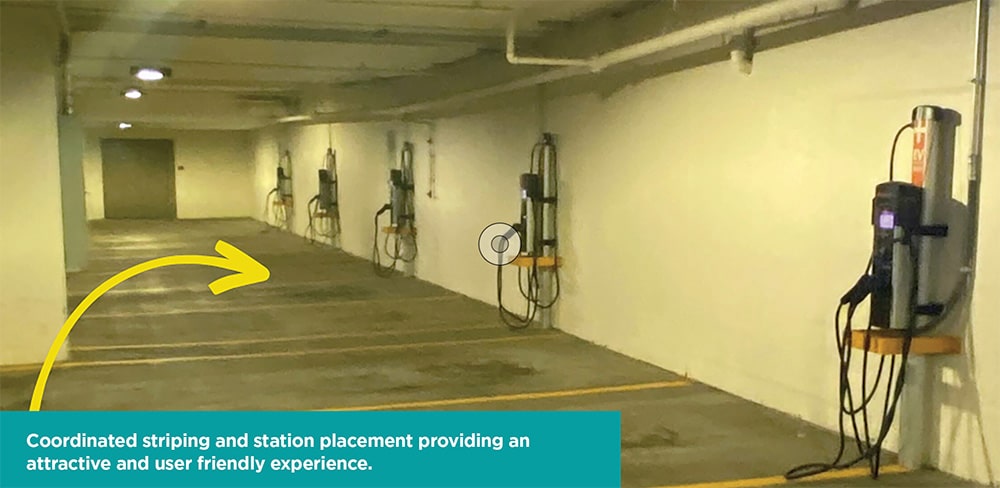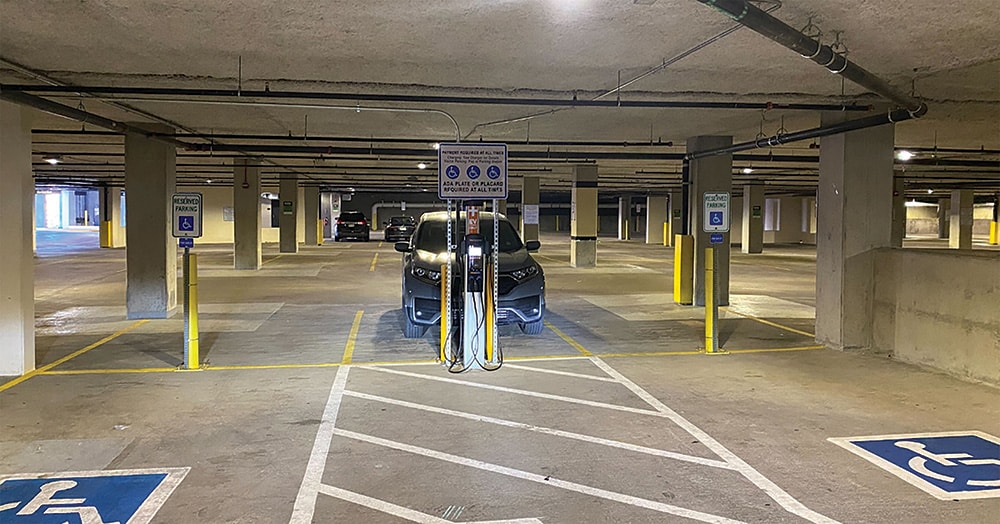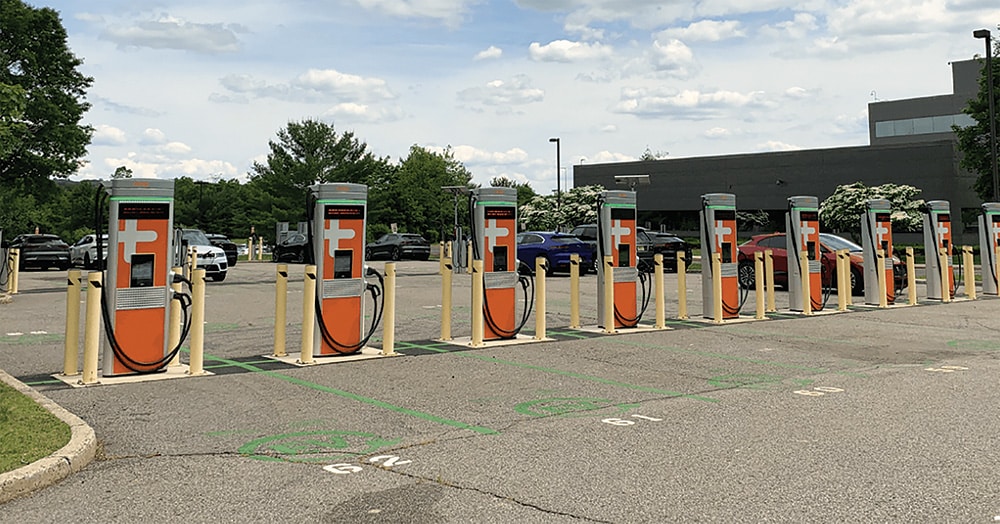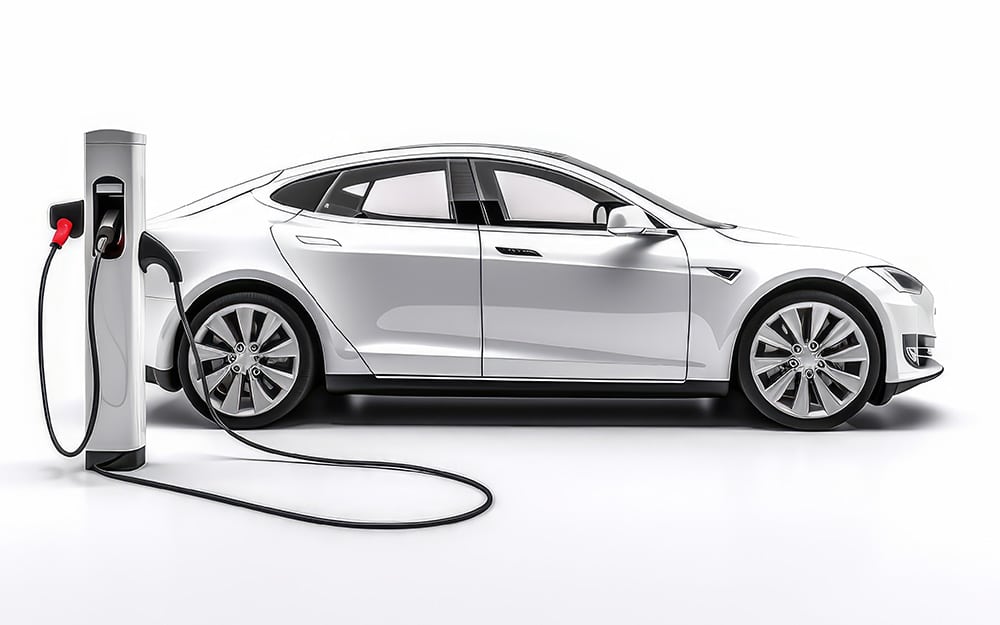
Rethinking Parking Facility Design
How Electric Cars are Changing the Architecture of Parking.
The EV revolution is speeding toward us. In the last five years, electric cars have gone from being something you occasionally saw on the road to being everywhere. Last year, more than 750,000 new all-electric cars were registered in the U.S. – a 57% increase over 2021. EVs represented nearly 6% of all new vehicles sold last year, while gas cars saw an 11% drop in sales. And we’re seeing them on the roads. Just this morning, while taking my daughter to school, I saw 15 Teslas, three Rivians, two ID4s, and a Bolt; 20 electric cars in a two-mile round trip commute.
With this fast-paced change comes new thinking around fueling and how that impacts businesses like parking. With smaller footprints and no EPA regulation, electric fueling can happen anywhere, and parking lots and garages are a natural fit. However, with any exponentially growing industry, it’s hard to fully see the breadth and depth of what’s coming and how to plan, especially with legislation lagging.
Table of Contents
It is critical to prepare—more importantly, plan—for the endless number of EVs expected to dominate the roads over the next few years. Although charging stations are not inexpensive, it’s typically the installation and retrofitting (usually costing upward of 8x that of new construction) that assume the lion’s share of the budget. This is where a little planning and architectural shifts can positively impact your bottom line now and into the future.
Here are a few things to consider …
Electrical Capacity.
While you may see fewer Evs on the road than I did this morning, they are our new reality. The Biden Administration announced new EPA regulations that will make it difficult for auto manufacturers to sell new combustion vehicles a decade from now, and seven states (California, Maryland, Massachusetts, New Jersey, New York, Oregon, and Washington) plan to ban gas-powered cars sales after 2035 – only 12 short years away. They plan to limit vehicle sales to EVs and some PEVs (plug-in hybrids). This mirrors what most automakers are planning on. Nearly all plan to stop selling internal combustion engine (ICE) cars and trucks between 2035-2045, and to that end, most have already stopped research and development on new ICE vehicles.
The most expected shift comes with planning for more demand on your electrical system. Whether updating a property or building it from the ground up, you must prepare for this inevitable reality. While you may not need the extra capacity immediately, we recommend building easily adaptable spaces for future build-out. Constructing oversized electrical rooms and allocating space for future electrical system storage will save you millions in the future and allow you to implement your charging infrastructure when the time is right—giving your property a competitive advantage. It may seem like a waste now, but again, studies have found that retrofits cost eight times more than putting in infrastructure at new construction.
Location, Location, Location.
Similarly, the location of those electric rooms matters. Build them as close to your proposed parking spaces as possible and easily accessible to your parking garage. Non-EV drivers often complain, “Why do EVs always get rockstar parking?” It’s not because they are special, it’s because those spaces at the front of the parking lot are often the closest to the electrical room, and that means a lot—in both time and money – when running wire and tearing up concrete.
Pre-wiring—EV Ready, EV Capable, & Pathways.
Municipalities nationwide are starting to pass legislation with EV charging pre-wiring as part of their building code. While it may not be a requirement everywhere yet, it likely soon will be, so being proactive can save significant time and money.
Pre-wiring or EV prepping can take one of four different forms. Many of these new codes require a certain percentage of parking spaces in the new construction to come with charging as a condition of getting a Certificate of Occupancy.
The second is what’s best known as “EV Ready,” and it is the most comprehensive pre-wiring approach. It’s where the complete circuit is installed up to and including a junction box to be used later. Even if you are not prepared to invest in EV charging today, your property will be ready to go when the time is right, and the hardware installation will be relatively turnkey. This also allows you to tease apart the installation and hardware expenses, enabling you to postpone the latter into future capital expenditure.
The third category is often referred to as “EV Capable.” In this case, the conduit and service panels are placed during construction without the breakers and wires. While this approach is less turnkey in the end, it does set you up for success by putting a workable skeleton in place and assuming some of the initial installation costs while delaying the investment in the actual electrical circuitry. Again, this allows you to spread the cost of the basic infrastructure, circuitry, and charging hardware and software across multiple budgets/years and still proactively plan for the future.
The final approach, and the cheapest of all the options, involves adding vertical and horizontal pathways throughout your parking facility during construction. These pathways are designed as access points, giving you more access to add the needed conduit and wiring. It will help you avoid extensive x-raying and drilling (the subsequent costly repairs) during the electrical installation.
The key to success with all these pre-wiring approaches is ensuring you’ve accounted for enough charging to meet your future needs upfront. Remember that most automakers are working towards eliminating ICE vehicles from their portfolios within the next 15 to 20 years. The current municipal codes vary from state to state; however, based on the current U.S. trend curve and what we see throughout Europe, you should be prepared to electrify 30-50% of all outlined spaces.
Communication is Key.

Straight or Angled Spaces?
Unlike gas cars, EV charging ports are not all located in the same place. Some are like their gas predecessors; however, many are in the front or front side of the vehicle. This means the placement of the conduit and lines could also influence the hardware you later invest in. For example, angled spaces or misplaced stub-ups could mean you’ll likely have to invest in longer (i.e., more expensive) charging cords and cable management systems, and longer cables require higher ceilings to manage the cables. This is something to discuss in the design phase with your architect, and striping may result from the structure’s design. Discussing these items with your equipment provider as early as the plan review stage and furthering those conversations with the fuller team will also help you avoid costly mistakes.
What Role Will EV Charging Play for Your Business?
The precursor to all these recommendations is thinking through how you will use EV charging on your property and doing so as early in the design phase as possible.
For example, will EV charging be an amenity the valet will use? If so, placement far from the entrance makes the most viable sense. If you’re planning to use charging for reserved parking or premium parking for your VIPs or specific tenants, placing stations closer to the front of the building or near the elevators, or even in a separate section, may be more advantageous. And this may also be the case with visitor parking.
Another consideration should be whether you plan on collecting revenue. While revenue generation and pricing strategies could be an article in itself, it is something for you to think about when planning the placement of your charging stations and incorporating that thinking into your architectural plans. This will also impact the type of charging hardware you select (level 2 vs. DC fast charging) and whether or not you invest in charging management software (for controlled access and revenue generation).
One critical consideration of station management is how the charging stations will connect with their networks (the software that allows you to control the charging stations and collect revenue). Most systems communicate via cellular modem; however, some offer WiFi or LAN connectivity. If you plan to install charging stations below ground, you will likely need to budget for cellular connectivity as well (and it also is a great safety feature for your tenants).
Rebates, Incentives, and NEVI Funds.
Tight budgets are often quoted as the most significant barrier to investment in EV infrastructure. As a result, all too often, parking operators and others respond with, “We’ll add when we have to.” Not only is this shortsighted, but it’s also fiscally irresponsible. Without question, between the installation and charging hardware, integrating EV charging is a significant capital investment. This is why many utilities, NGOs, and municipalities are offering financial incentives for charging infrastructure.
These opportunities vary by state, but the dollars are tremendous and potentially game-changing for your property. Many incentives cover as much as 80% of installation and hardware costs. Some even cover management software and warranties. It’s essentially free money and, depending on the program, could determine how robust your infrastructure potential could be and greatly influence how you plan and design your property’s EV integration. The key is taking advantage of the incentive programs now, as many will be available with a finite bucket of money for a limited time frame.
Holistic Planning.
Ultimately, EV charging should not be an afterthought, especially if you’re currently investing in new construction or significant property updates. The EV revolution is here and here to stay, and parking facilities have a tremendous opportunity to become part of the new fueling paradigm. However, to be successful and cost-efficient, advance planning, research, and communication, even in the initial architectural development, is critical. All in all, electric-powered vehicles are driving us to rethink how parking facilities are designed and built. ◆
Jim Burness is CEO & Founder of National Car Charging & Aloha Charge, and is a member of the IPMI Accessibility Working Group.
-
Jim Burnesshttps://parking-mobility-magazine.org/author/jim-burness/April 6, 2023
-
Jim Burnesshttps://parking-mobility-magazine.org/author/jim-burness/September 4, 2023

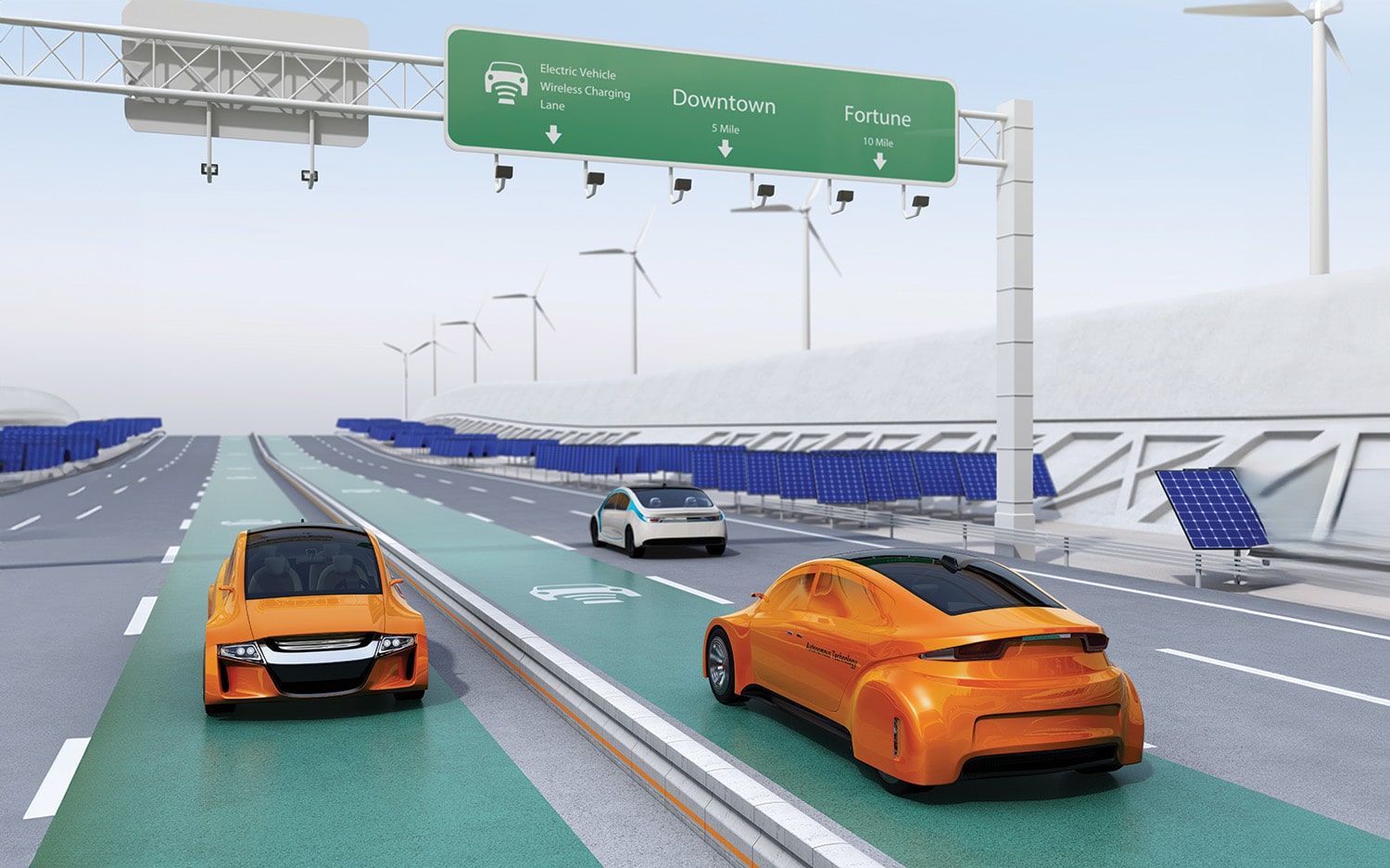
Detroit Paves the Way
Are We Ready for Wireless Charging Roads?
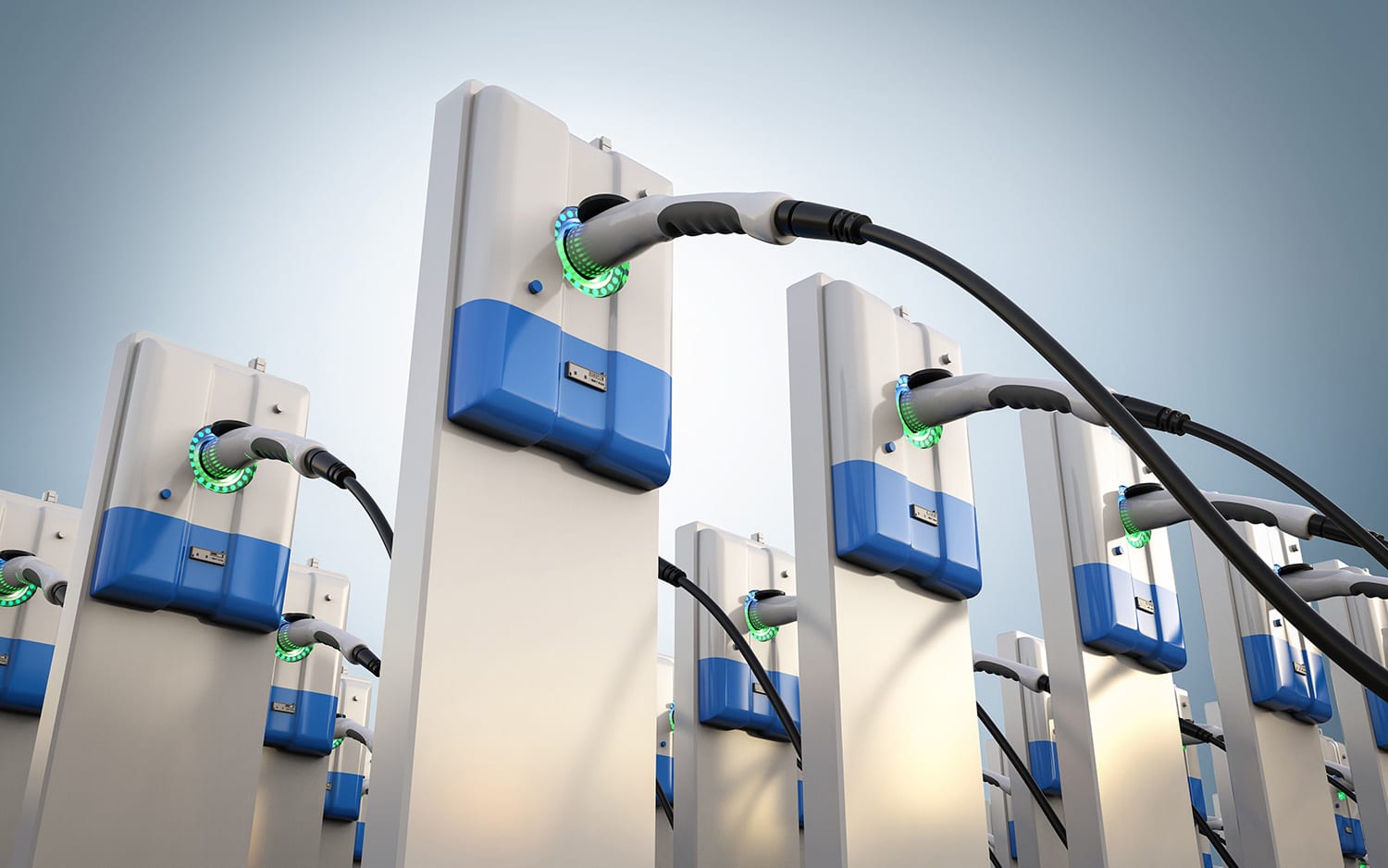
Ready, Set, Plug-In
EV Readiness Perspectives




